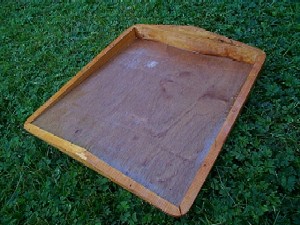
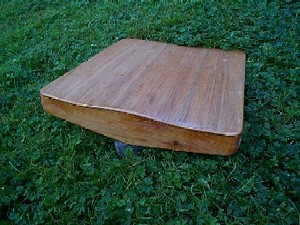
Next, I tried it. This seat was vastly superior to the original on a long paddle!
When I first launched my kayak, I installed the minicell foam seat that was supplied. While this seat was made of the finest of materials, I began having the problem that my feet would fall asleep while I was paddling. I could not paddle for twenty minutes and stand up at the end. I began research on the problem.
Would a better seat solve the problem? Maybe, but maybe not. Other builders were posting messages on the CLC message boards about this same problem. Some of these builders, despite having invested in very expensive seats, still had the problem.
Why was a hard Adirondack chair so much more comfortable than my padded kayak seat? Finally, there were some posts on the message board that suggested that the problem is not padding, but weight distribution. If my weight could be distributed more evenly, down the thighs, this might relieve the pressure on the posterior. I tested this theory by inflating my paddle float beneath my thighs during a long paddle. It worked! I then began to work on a new seat for my kayak.
For my first attempt, I went back to the design of the old Adirondack chair. I wanted a longer, inclined surface on which to sit. I set my boat in the grass, found some boards and a tape measure, and got in. Using the tape measure, I determined how much incline was needed to support my legs, while my knees were locked into the kneebraces.
For this experimental seat, I spent $2.00 on some 1/4" lauan, and found some cedar siding scraps. I cut cedar wedges to support the sides of the seat, and fabricated the front and back to conform to the kayak's bottom. I even attempted to induce some shape into the lauan top, not very sucessfully. After assembly, I coated the entire seat with clear epoxy.


Next, I tried it. This seat was vastly superior to the original on
a long paddle!
The next attempt:
While the experimental seat was much better, I wanted some improvements.
I wanted a more comfortable shape to my seat, and I wanted it made of better
materials.
I started with a sheet of birch plywood, 1/32 inch thick. The sheet
was 12x24 inches. I wanted a finished seat around 16x18". How to move these
areas around? By using scarf joints. I cut the scarfs with a sander, because
my block plane would have had to be "scary sharp" to cut properly. The
8 to 1 scarf in 1/32" plywood is only 1/4 inch long. This truly is a superior
method of joining wood; the resulting panel was strong, yet pliable. Next,
I cut out the panel to it's finished dimensions with an x-acto knife.
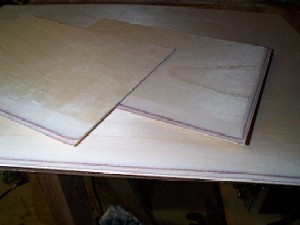
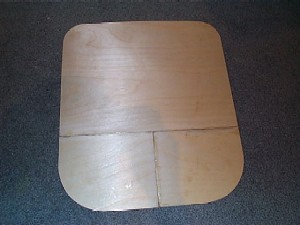
Next, I built a simple jig. The front of the seat "hooks" under the
tongue of a tongue and groove board, is clamped flat by two pieces, and
finally, a riser induces bend at the back of the seat. The panel has a
tight radius at the front, dropping 3/4". At rear, there is a 1-1/2 inch
rise with a larger radius. The plan is to lay up one layer of 5oz glass
cloth on both sides, protect with plastic film, and clamp.

After unclamping, I added 2 more layers of glass cloth to each side,
fabricated riser wedges from okoume, and applied fill coats of epoxy. This
process took several evenings, but resulted in a rigid fiberglass seat
with a wood core. This method of laying up worked, but it is not foolproof!
Those clamping boards would move the glass, resulting in some floating
glass. Afterward, I cut those areas of glass out, and repaired them in
the subsequent layers.
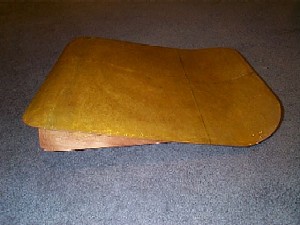
The seat is held to the kayak floor with velcro. It is very comfortable
to paddle for long periods. I do not use any padding on the seat.